Abstract
Despite the progress that has been made in the treatment of cholera, mortality rates from this disease remain high in rural areas where intravenous fluids are not readily available. The authors have therefore conducted controlled studies into the efficacy of a simpler form of maintenance therapy—the administration of glucose-containing electrolyte solutions by mouth. The results obtained from the study of 51 adult patients (36 with cholera and 15 with severe non-cholera diarrhoea) indicate that oral fluids are adequate for maintenance therapy in cholera and severe diarrhoeal disease, and that there is no significant increase in the duration of diarrhoea or in the stool volume in patients receiving such therapy.
The addition of a non-specific adsorbent, charcoal, to the fluid led to a significant increase in the volume of diarrhoeal stools and to prolongation of vibrio excretion; its use is therefore not recommended. The use of oral replacement solutions should result in improvement of cholera treatment of adults in rural areas and in a reduction in the cost of treatment.
Full text
PDF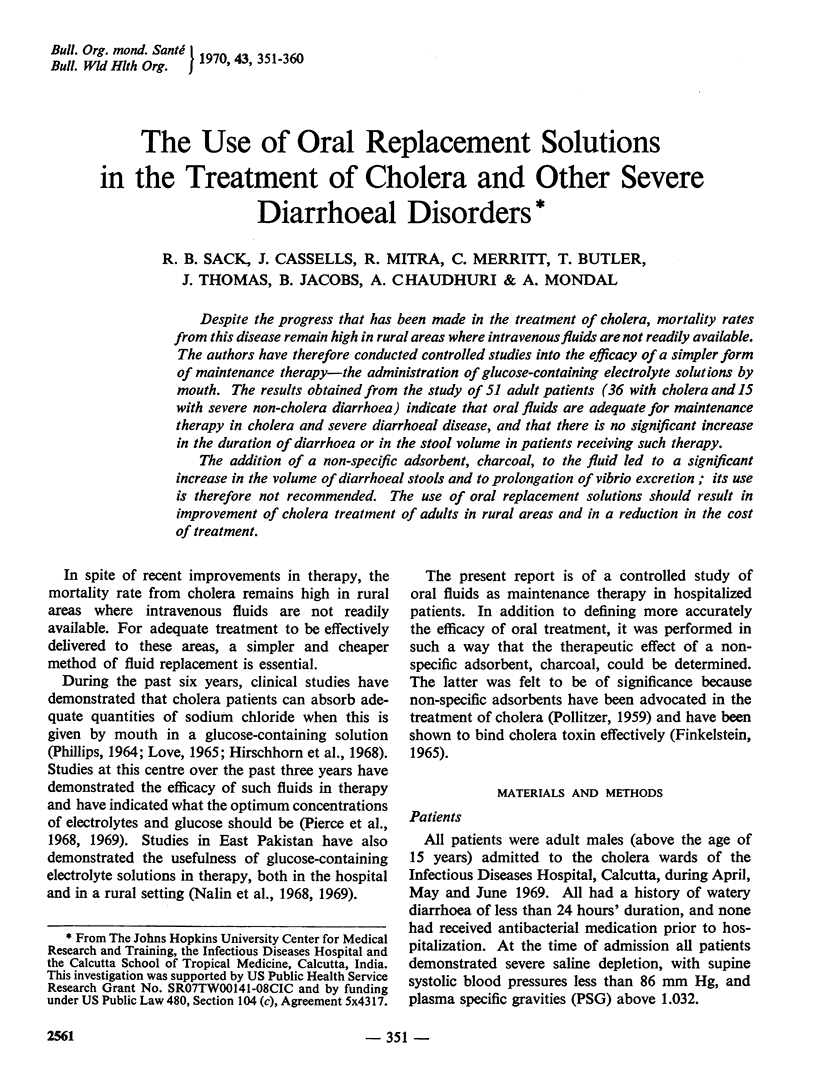
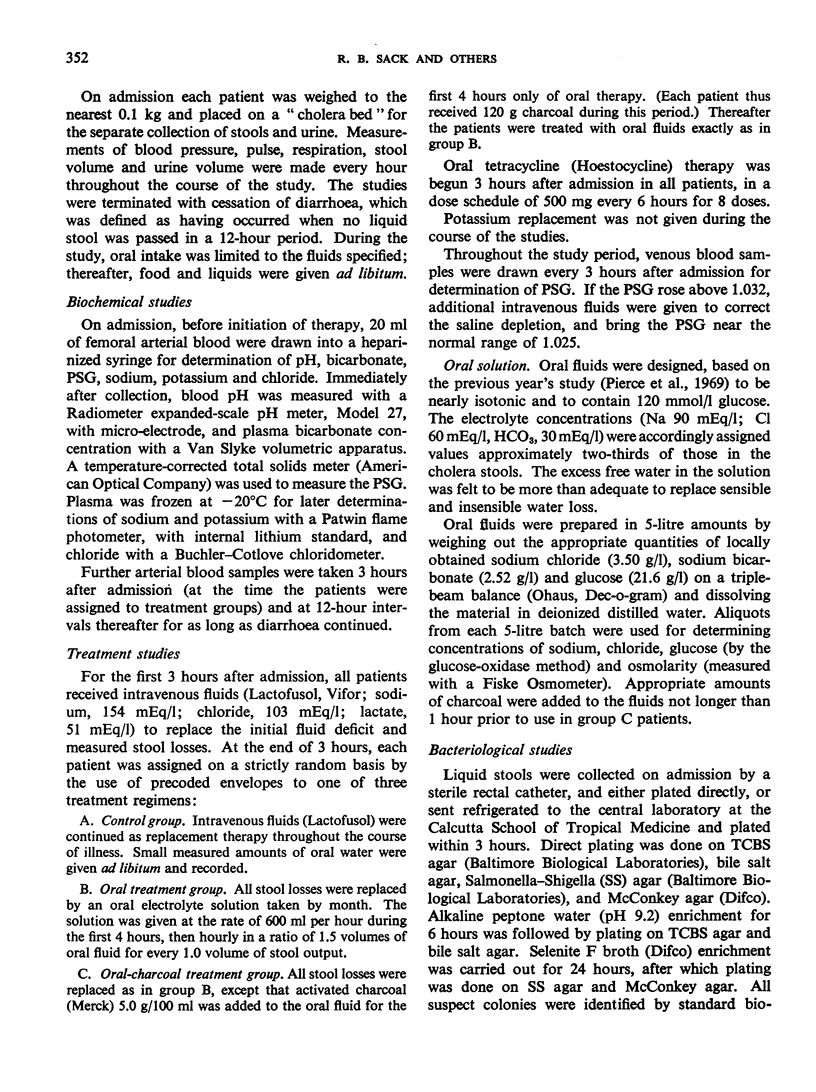
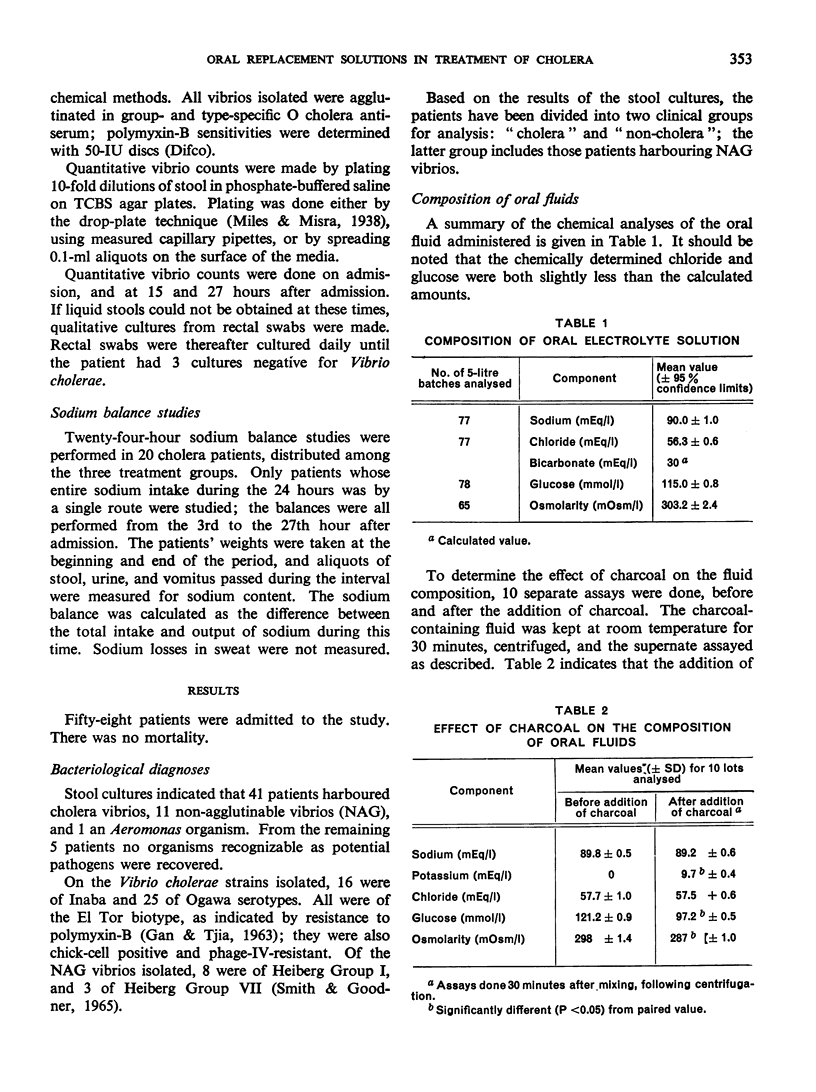
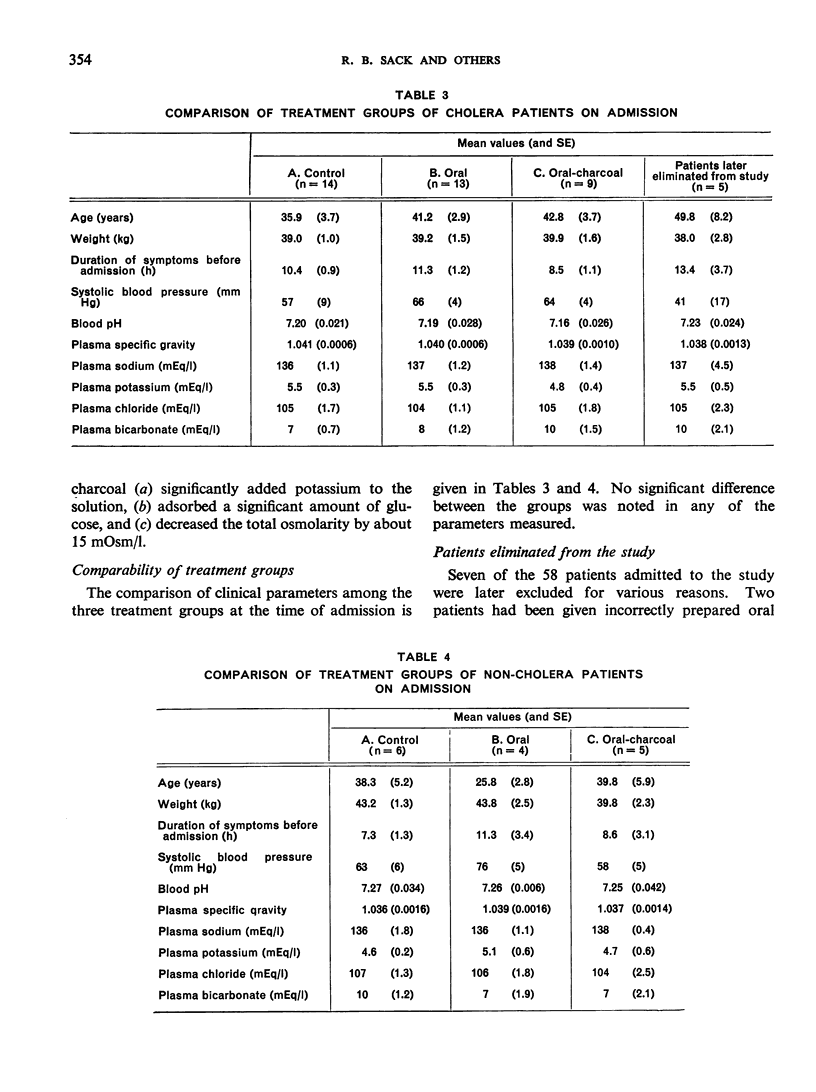
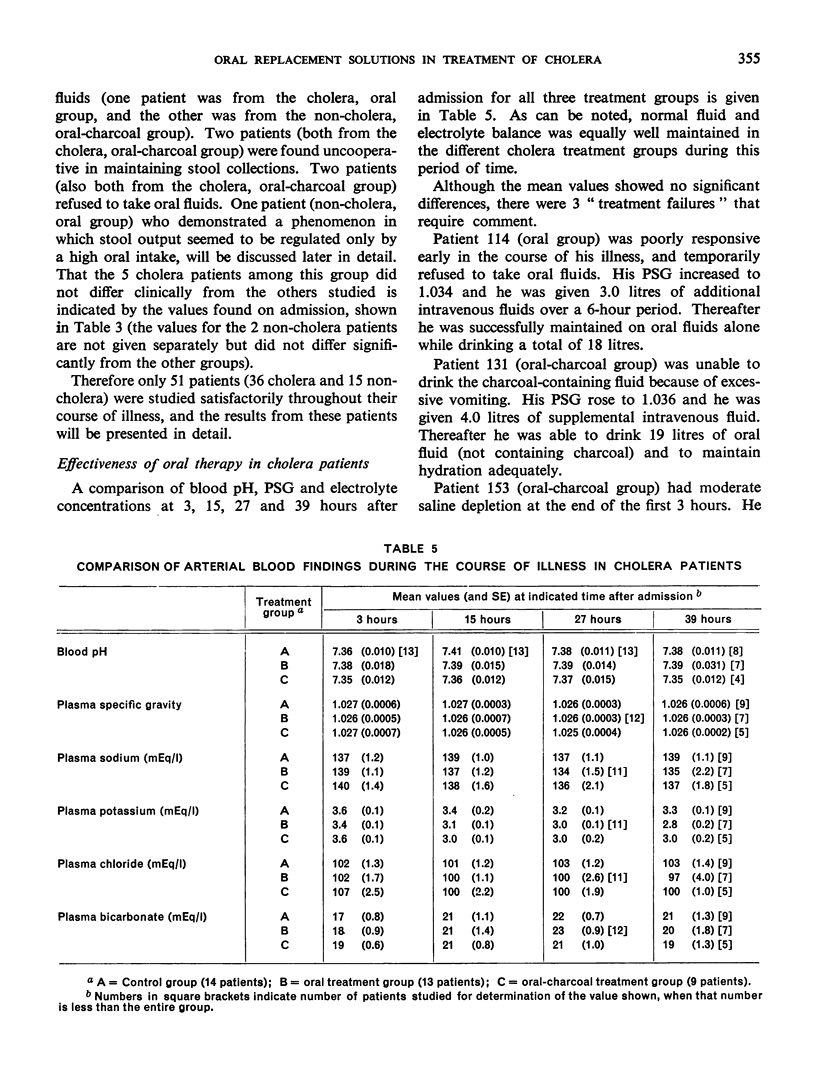
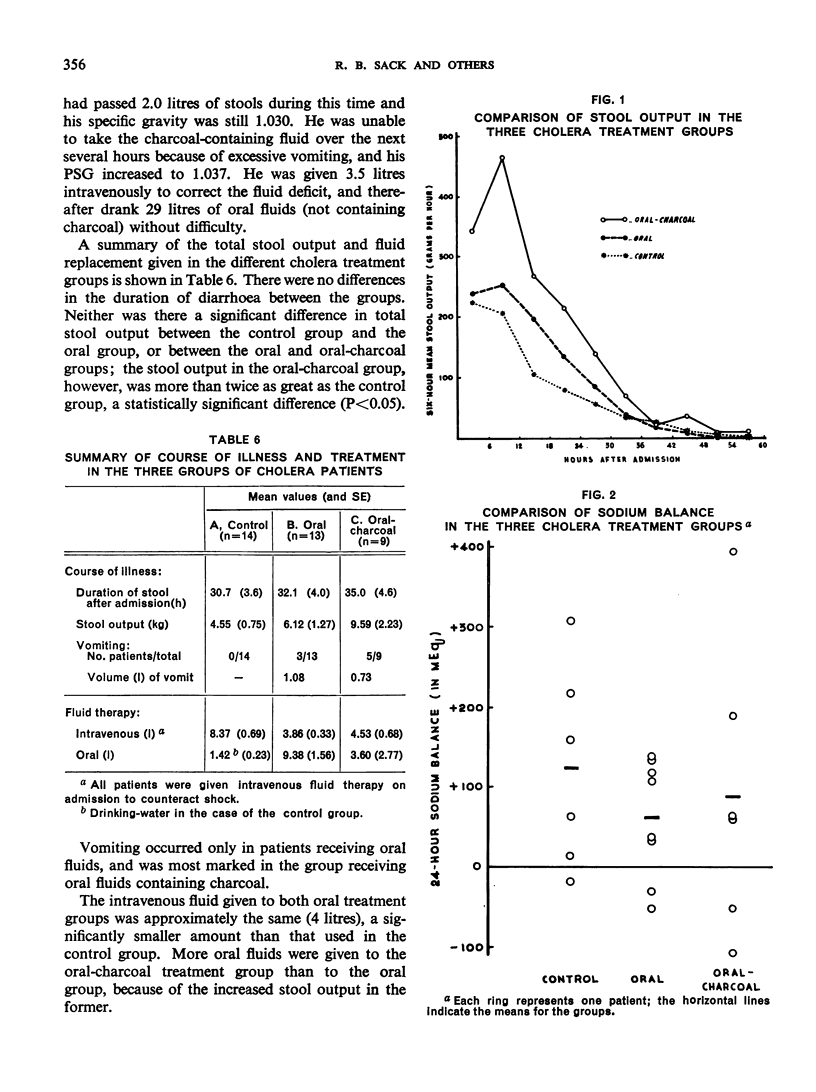
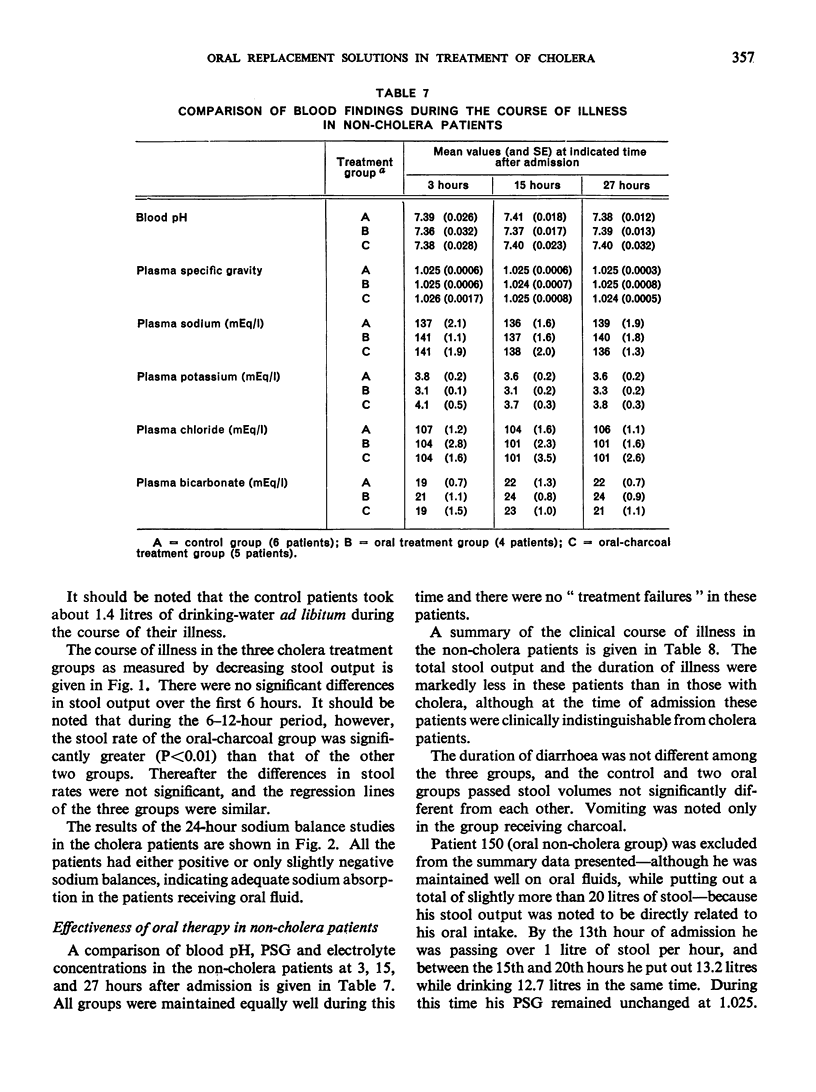
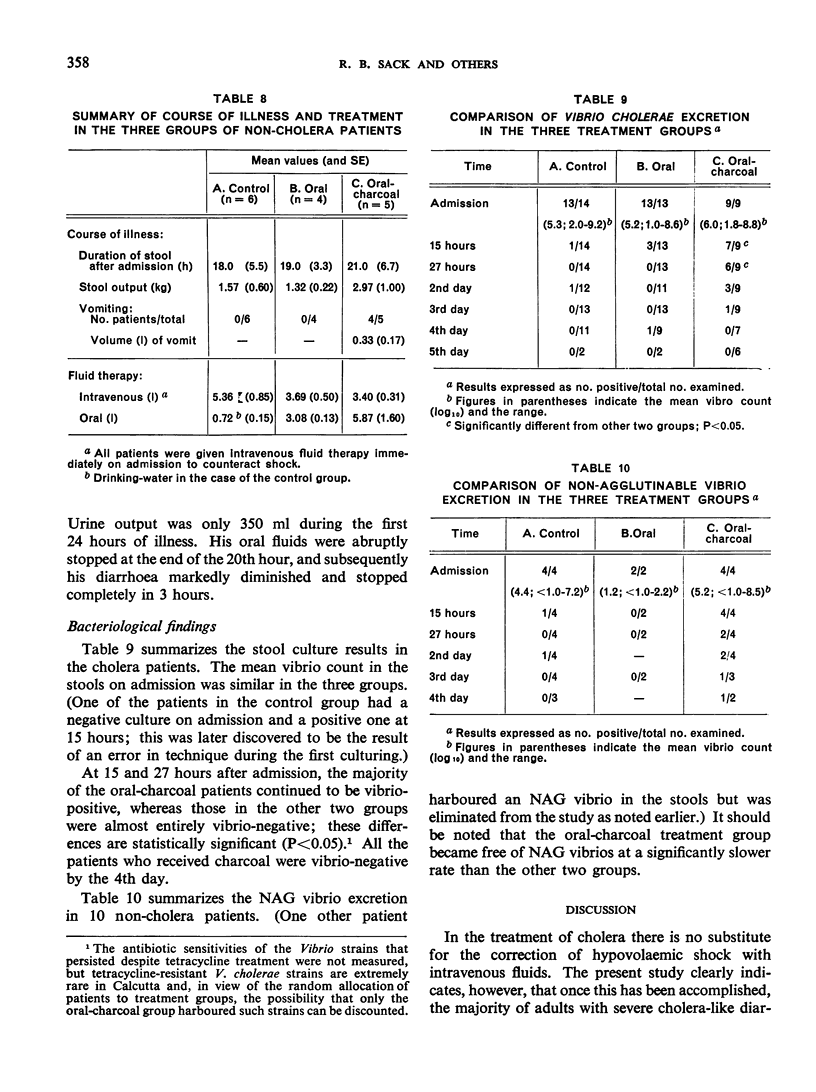
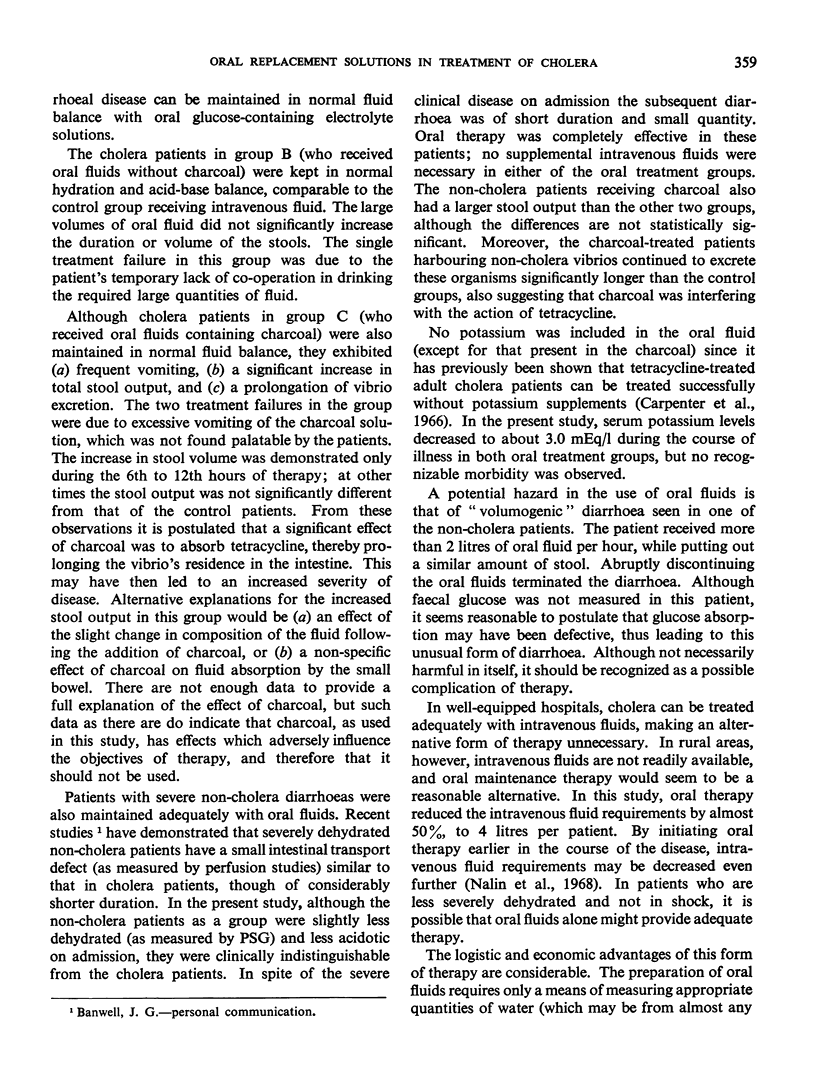
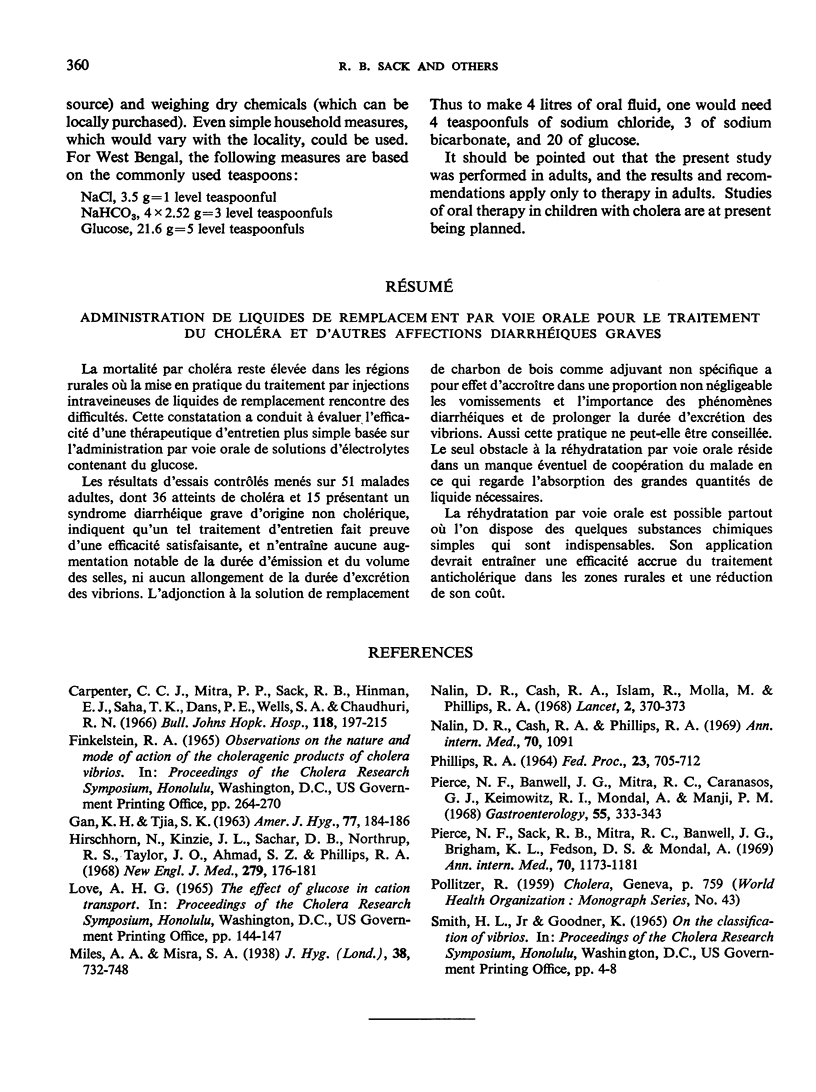
Selected References
These references are in PubMed. This may not be the complete list of references from this article.
- HAN G. K., KHIE T. S. A new method for the differentiation of Vibrio comma and Vibrio El Tor. Am J Hyg. 1963 Mar;77:184–186. doi: 10.1093/oxfordjournals.aje.a120308. [DOI] [PubMed] [Google Scholar]
- Hirschhorn N., Kinzie J. L., Sachar D. B., Northrup R. S., Taylor J. O., Ahmad S. Z., Phillips R. A. Decrease in net stool output in cholera during intestinal perfusion with glucose-containing solutions. N Engl J Med. 1968 Jul 25;279(4):176–181. doi: 10.1056/NEJM196807252790402. [DOI] [PubMed] [Google Scholar]
- Nalin D. R., Cash R. A., Islam R., Molla M., Phillips R. A. Oral maintenance therapy for cholera in adults. Lancet. 1968 Aug 17;2(7564):370–373. doi: 10.1016/s0140-6736(68)90591-6. [DOI] [PubMed] [Google Scholar]
- PHILLIPS R. A. WATER AND ELECTROLYTE LOSSES IN CHOLERA. Fed Proc. 1964 May-Jun;23:705–712. [PubMed] [Google Scholar]
- Pierce N. F., Banwell J. G., Rupak D. M., Mitra R. C., Caranasos G. J., Keimowitz R. I., Mondal A., Manji P. M. Effect of intragastric glucose-electrolyte infusion upon water and electrolyte balance in Asiatic cholera. Gastroenterology. 1968 Sep;55(3):333–343. [PubMed] [Google Scholar]
- Pierce N. F., Sack R. B., Mitra R. C., Banwell J. G., Brigham K. L., Fedson D. S., Mondal A. Replacement of water and electrolyte losses in cholera by an oral glucose-electrolyte solution. Ann Intern Med. 1969 Jun;70(6):1173–1181. doi: 10.7326/0003-4819-70-6-1173. [DOI] [PubMed] [Google Scholar]


